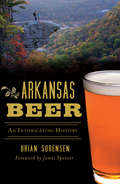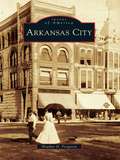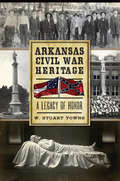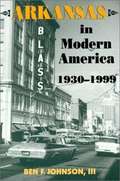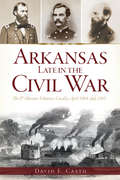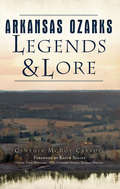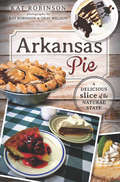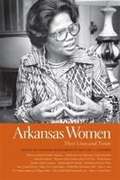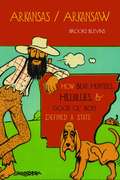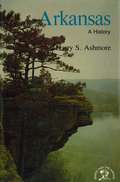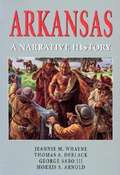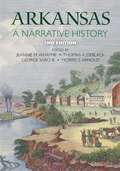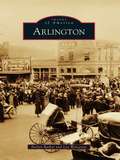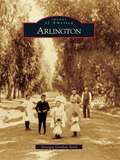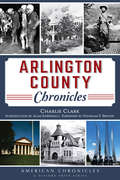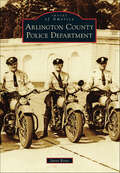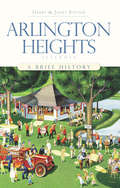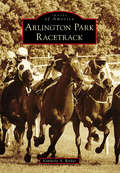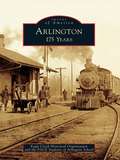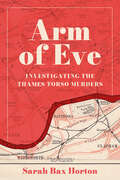- Table View
- List View
Ark on the Move
by Gerald DurrellDurrell dramatically reveals the plight of endangered species and shows us the serious consequences to life and its future on this earth. The islands of Mauritius and Madagascar provide the exotic setting for Durrell's most recent expedition.
Arkansas Beer: An Intoxicating History (American Palate)
by James Spencer Brian SorensenArkansas�s booze scene had a promising start, with America�s biggest brewing families, Busch and Lemp, investing in Little Rock just prior to Prohibition. However, by 1915, the state had passed the Newberry Act, banning the manufacturing and selling of alcohol. It was not until sixty-nine years later that the state welcomed its first post-temperance brewery, Arkansas Brewing Company. After a few false starts, brewpubs in Fayetteville, Fort Smith and Little Rock found success. By 2000, the industry had regained momentum. An explosion of breweries around the state has since propelled Arkansas into the modern beer age.
Arkansas City: People, Places, And Events (Images of America)
by Heather D. FergusonArkansas City has often been called "the gateway to the West." The name lends a lot to describing the town--a town that was founded as a border town to Indian Territory, a major trade hub to the Indian agencies in Indian Territory, and a major transportation center for those wishing to travel through the territory and farther west. Arkansas City started off as a small town with false-fronted stores but became a bustling community where the people were forward thinkers and pushed for quality and modernization in everything they brought to the city whether that was business, industry, or entertainment. Arkansas City is known for the Cherokee Strip Land Rush of September 16, 1893, interaction with the Native Americans in Indian Territory, farming, ranching, and aircraft. Although Arkansas City was a civilized community, it was a city on the fringe of a lawless and unsettled territory where outlaws lurked and Native Americans were forced to settle. People loaded their wagons or went by train to cross through Oklahoma to Texas, New Mexico, or Arizona, leaving from Arkansas City. Due to Arkansas City's location, interaction with major figures and events in history, and its importance to travel farther west, Arkansas City was truly "the gateway to the West."
Arkansas Civil War Heritage: A Legacy of Honor (Civil War Series)
by Dr W. TownsThe American Civil War shaped the course of the country's history and its national identity. This is no less true for the state of Arkansas. Throughout the Natural State, people have paid homage and remembrance to those who fought and what was fought for in memorial celebrations and rituals. The memory of the war has been kept alive by reunions and preservationists, continuing to shape the way the War Between the States affects Arkansas and its people. Historian W. Stuart Towns expertly tells the story of Arkansas's Civil War heritage through its rituals of memorial, commemoration and celebration that continue today.
Arkansas County: Arkansas (Images of America)
by Ray Hanley Steven HanleyFirst established by the French in 1686, Arkansas Post was the first permanent European settlement in the Mississippi River Valley. It played a key role in the long struggle between France, Spain, and England for control of the lucrative fur trade. The only battle of the American Revolution fought west of the Mississippi took place in Arkansas County. Located in the heart of the Grand Prairie, Stuttgart, one of two Arkansas County seats, is known as the "duck and rice capital of the world." Bayou Meto and several lakes draw waterfowl to the area each fall, and ducks flocking to Stuttgart attract hunters from across the nation. Each November, the community hosts the World Championship Duck Calling Contest.
Arkansas In Modern America 1930-1999
by Ben F. JohnsonThis book traces Arkansas's evolution from a primarily rural society in the early 1900s to its expanding manufacturing economy and its growing prosperity and parity with the rest of the nation.
Arkansas Late in the Civil War: The 8th Missouri Volunteer Cavalry, April 1864-July 1865 (Civil War Series)
by David E. CastoAt the request of Union general Ulysses S. Grant, in 1864 Major General Frederick Steele stripped the Department of Arkansas of twelve thousand men--half its strength--to support an expedition in Louisiana. And while the depleted infantry remained largely in garrison, the 8th Missouri Cavalry and its counterparts were ordered to patrol central Arkansas under horrid conditions and protect the state from guerrilla Rebels. The regiment spent nine long months battling against Confederate general Jo Shelby's efforts to raid the White River Valley behind Union lines while simultaneously battling to secure Arkansas' borders. Join author David Casto as he explores the 8th Missouri Volunteer Cavalry's perilous excursion into enemy territory.
Arkansas Ozarks Legends & Lore (American Legends)
by Cynthia McRoy CarrollThe unspoiled, wooded landscape of the Arkansas Ozarks is steeped in traditions, where legend and myth are a huge part of history. During the Civil War, when Maranda Simmons boldly retrieved her stolen horses from a Union camp, soldiers believed she was a haint. When a cast-iron stove fell on Grace Sollis's baby, she gained superhuman strength, picked up the stove to free the baby and then ran circles around the log cabin until she came to her senses. After patiently waiting years for her promised dream house, Elise Quigley and her five children tore down their three-room shack and moved into the chicken house after Mr. Quigley left for work. Join author Cynthia Carroll, a descendant of six generations of Ozark natives, as she details the legends and lore of the Arkansas Ozarks.
Arkansas Pie: A Delicious Slice of The Natural State
by Kat RobinsonDozens of different pies on restaurant menus from the Delta to the Ozarks await hungry diners, and almost every delectable creation is a masterpiece of southern baking. Join food writer Kat Robinson on a tour through an Arkansas culinary tradition. Kat has traveled the state, sampling more than four hundred different varieties and absorbing stories along the way. Learn where fried pie is king and why a pie called possum should be the official state pie. Meet the North Little Rock man who made and sold one hundred different pies in a single day, and discover the new and innovative pie-making methods of chefs in Fayetteville and Hot Springs. It's all here in this mouthwatering and informative collection.
Arkansas Women: Their Lives and Times
by Cherisse Jones-Branch Gary T. EdwardsThe book highlights prominent Arkansas women, exploring women's experiences across time and space from the state's earliest frontier years to the late twentieth century. In doing so, this collection of fifteen biographical essays productively complicates Arkansas history by providing a multidimensional focus on women, with a particular appreciation for how gendered issues influenced the historical moment in which they lived.
Arkansas/arkansaw: How Bear Hunters, Hillbillies, And Good Ol' Boys Defined A State
by Brooks BlevinsWhat do Scott Joplin, John Grisham, Gen. Douglas MacArthur, Maya Angelou, Brooks Robinson, Helen Gurley Brown, Johnny Cash, Alan Ladd, and Sonny Boy Williamson have in common? They’re all Arkansans. What do hillbillies, rednecks, slow trains, bare feet, moonshine, and double-wides have in common? For many in America these represent Arkansas more than any Arkansas success stories do. In 1931 H. L. Mencken described AR (not AK, folks) as the “apex of moronia.” While, in 1942 a Time magazine article said Arkansas had “developed a mass inferiority complex unique in American history.” <p><p> Arkansas/Arkansaw is the first book to explain how Arkansas’s image began and how the popular culture stereotypes have been perpetuated and altered through succeeding generations. Brooks Blevins argues that the image has not always been a bad one. He discusses travel accounts, literature, radio programs, movies, and television shows that give a very positive image of the Natural State. From territorial accounts of the Creole inhabitants of the Mississippi River Valley to national derision of the state’s triple-wide governor’s mansion to Li’l Abner, the Beverly Hillbillies, and Slingblade, Blevins leads readers on an entertaining and insightful tour through more than two centuries of the idea of Arkansas. One discovers along the way how one state becomes simultaneously a punch line and a source of admiration for progressives and social critics alike.
Arkansas: A History
by Harry S. AshmoreSouth and West, delta and mountains, black and white, rich and poor, Arkansas is a complex state whose history has not been widely understood. In this graceful and good-humored account, author Harry S. Ashmore takes us on an instructive journey over the state's fascinating terrain and offers important new insights into Arkansas's historical character. Arkansas lies west of the Mississippi River and has shared much with that vast western region. Yet it also joined the Confederate States of America and has prided itself on its southern heritage. In the early nineteenth century, Arkansas was little removed from its wilderness beginnings, but the Indians who first made its hills and forests their home soon learned that the white man's frontier meant their demise. Later in the antebellum era, the young state searched for a sense of identity, covering with a patina of gentility the energy and violence that was characteristic of frontier America. The Civil War and Reconstruction brought both suffering and freedom and for the future left a mixed legacy. In the last hundred years, Arkansans struggled with old problems in a new context--race, cotton, sharecropping, and a colonial economy--and they discovered anew the need for hard work and good faith. On rich delta plantations and spare upland farms, in small towns and in cities like Little Rock and Fort Smith, the plain people of this state applied themselves to the pursuit of prosperity and hoped for a richer near future for their children.
Arkansas: A Narrative History
by The Editors at the University of Arkansas PressChronicles the history of Arkansas, from the wild wild west to present day.
Arkansas: A Narrative History, Second Edition
by Jeannie M. Whayne Thomas A. Deblack George Sabo III Morris S. ArnoldArkansas: A Narrative History is a comprehensive history of the state. It covers prehistoric Arkansas, the colonial period, and the nineteenth and twentieth centuries and incorporate the newest historiography to bring the book up to date. This second edition begins with a new chapter focusing on Arkansas geography and includes a number of maps highlighting various features of Arkansas's natural landscape.
Arkansas: Adventures in Time and Place
by Tom Greer Lavell ColeFocusing on the history and geography of Arkansas.
Arlene Chan 4-Book Bundle: The Chinese Community in Toronto / The Chinese in Toronto from 1878 / Paddles Up! / Spirit of the Dragon
by Arlene Chan Susan HumphriesThird-generation Chinese-Canadian Arlene Chan shares the rich histories of Toronto’s Chinese-Canadian communities in this special four-book bundle. Includes: The Chinese Community in Toronto The history of the Chinese community in Toronto is rich with stories drawn from over 150 years of life in Canada. Stories, photographs, newspaper reports, maps, and charts will bring to life the little-known and dark history of the Chinese community, showing how the Chinese make a significant contribution to the vibrant and diverse mosaic that makes Toronto one of the most multicultural cities in the world. The Chinese in Toronto from 1878 In 1894 Toronto’s Chinese population numbered 50. Today, no less than seven Chinatowns serve the second-largest visible minority in the city, with a population of half a million. With their many achievements, the Chinese have become a vibrant part of the diverse mosaic that makes Toronto one of the most multicultural cities in the world. Paddles Up! Dragon Boat Racing in Canada Paddles Up! provides an in-depth look at dragon boating from its beginnings in ancient China to the modern-day prominence of Canadian teams on the international scene, as told in the words of top coaches of men’s and women’s teams, experts and enthusiasts, and sports health professionals across Canada. Spirit of the Dragon: The Story of Jean Lumb The Order of Canada, the country’s highest honour, is awarded to those who have made a distinct contribution to Canadian life. The late Jean Lumb received the Order of Canada, among other awards, for her role in changing Canada’s immigration laws that separated Chinese families, and for her contribution in saving Chinatowns across Canada.
Arlington
by Lea Worcester Evelyn BarkerHistorians dispute the founding of Arlington. Some say Arlington started in 1848 when Col. Middleton Tate Johnson started the settlement called Johnson's Station, a forerunner of Arlington. Others say it was 1876, when the railroad arrived, or 1877, when the post office was established. Still others claim 1884 as the founding, because that was when city leaders incorporated Arlington, naming the town after the home of Gen. Robert E. Lee. Whatever date one chooses for the founding, there is no question that Arlington has grown from its frontier origins into the entertainment center of North Texas. Highlights of Arlington's development include Depression-era gambling at Top O' Hill and Arlington Downs, Progressive values in the Berachah Home for Erring Girls, higher education through the University of Texas at Arlington, and economic expansion with General Motors. More recently, energetic citizens like former mayor Tommy Vandergriff helped bring two professional sports teams to Arlington. Today the Texas Rangers and Dallas Cowboys share top billing with the city's other signature attractions--Six Flags Over Texas and Hurricane Harbor.
Arlington (Images of America)
by Georgia Gordon SerclThe neighborhood of Arlington, located about five miles southwest of downtown Riverside, was first settled in the 1870s and was later developed as a town site in 1877 by philanthropist Samuel C. Evans and William Sayward. Citrus groves flourished in the area, providing the community with a newfound wealth. Large and gracious homes were built on wide streets lined with beautiful shade trees. Arlington's commercial district at Van Buren Boulevard and Magnolia Avenue expanded to include a bank, chamber of commerce, newspaper, store, church, boardinghouse, and post office with its own Arlington postmark, in use since 1888. In the early 1900s, an electric railway was built down the center of Magnolia Avenue ending at beautiful Chemewa Park with its large trees, dance pavilion, zoo, and polo field. Today Arlington retains much of its neighborhood feeling while undergoing a large-scale redevelopment project for a future retail and commercial district.
Arlington County Chronicles
by Charlie ClarkModern-day Arlington County is a center for government institutions and a critical part of the Washington, D.C. community. But the identity of the area goes far beyond the influence of the nation's capital. During the War of 1812, the original copy of the Declaration of Independence was hidden from the British in a local area gristmill. Arlington was the only county in Virginia to vote against secession, despite being home to Robert E. Lee. In the 1950s, a young Jim Morrison was raised partly in Arlington. The county even boasts an infamous $1 million bus stop. In this collection of his most funny and fascinating columns, local author, historian, journalist and "Our Man in Arlington" Charlie Clark regales with stories of politics, personalities and everything in between.
Arlington County Police Department (Images of America)
by Janet RoweArlington County was carved from a section of the District of Columbia and formally named by the Virginia General Assembly in 1920. The rural farming community across the Potomac River was home to vacationing District of Columbia elite as well as rumrunners and brothels. Law enforcement fell to the commonwealth attorneys, sheriffs, special officers, and citizen leagues. The county board adopted a proposal, and the Arlington County Police Department was founded on February 1, 1940. This photographic history covers law enforcement from the early days of rumrunners to the present day, showing the changes in uniforms, equipment, methods of policing, and the department's response to the 9/11 attack on the Pentagon. Officers are shown training for the line of duty, investigating crimes, serving in specialized units, and promoting public safety. The officers who made the ultimate sacrifice in service to the community are honored here.
Arlington Heights, Illinois: A Brief History (Brief History)
by Gerry Souter Janet SouterThe village of Arlington Heights--beginning with the diligence and fortitude of William Dunton--is replete with stories of bitter hardship and exalting triumph. Originally named Dunton after its founder, the village's success was sealed by canny deal-making that brought a railroad through the middle of town. As the state of Illinois boomed, the village on the tracks flourished with agriculture, industry, transportation and an expanding population. From the influx of immigrants and industry to the resurrection of the Arlington Park Racetrack, read the compelling history of a small agricultural village's transformation into a thriving commercial district and the unique way in which its small-town charm and industrious spirit coexist.
Arlington Park Racetrack (Images of America)
by Kimberly A. RinkerBorn of one man's dream and built on 1,001 acres northwest of metropolitan Chicago, Arlington Park had its inaugural run in 1927 and celebrated its 90th season in 2017. Innovative and forward-thinking, Arlington set the standard of excellence during the glory days of racing. The famed racetrack survived a devastating fire in 1985, reopening four years later to worldwide acclaim. Over the decades, Arlington has played host to some of the most famous horses, jockeys, trainers, and owners in the sport of kings. Arlington is also home to the world's first million-dollar race--the renowned Arlington Million--and is the only Windy City racetrack to have hosted the Breeders' Cup Championships.
Arlington: 175 Years
by Eagle Creek Historical Organization PACE students of Arlington SchoolIn 1834, Robert Hurd and his family settled on a parcel of land in what is now present-day Arlington. A devout Presbyterian, Hurd named the town after his favorite church hymn. In the late 1800s, the small town of Arlington saw progress in the form of two railroads. The mid-1930s were especially prosperous, as the town enjoyed a bustling business center that included six grocery stores. The famous Arlington Homecoming Festival began in 1946 and ran for 50 years. In the 1990s, George Herbert Bush and William Jefferson Clinton made presidential campaign stops here, making history in this quiet, small town. The heart of this town can be found in its citizens, their churches, schools, and businesses, and their community park. Current and former residents alike share fond memories of their small-town lifestyle and are proud to be Arlingtonians.
Arm of Eve: Investigating the Thames Torso Killer
by Sarah Bax HortonThe Thames Torso Killer should, by rights, take precedence over Jack the Ripper as the world’s first and most notorious unidentified serial killer. He started to kill in Easter 1887, over a year before the Ripper, and his last murder was in September 1889, almost ten months after the Ripper’s last victim, Mary Jane Kelly. The Torso killer murdered and dismembered at least four women, in addition to the unborn child of the only victim who was identified.The author’s profile of the killer reveals a detailed description of his trade, location and movements. She searches against that profile to find a known criminal with a similar modus operandi as the killer. Waterman and lighterman James Crick was sentenced to fifteen years for a single conviction of rape, although charges of rape and attempted murder were brought against him by two women. Crick’s method of accosting the women, and transferring them between his skiff and other vessels, explains how the killer secured temporary secure premises for his attacks and dismemberment.Owing to its overlap with the Jack the Ripper series of murders, this book revisits many of the locations and personalities from that case. It compares and contrasts the Ripper and Torso killer, and the associated police investigations, while paying tribute to river policeman Detective Inspector John Regan.
Armada 1588: The Spanish Assault on England (Campaign Chronicles Ser.)
by John BarrattThe political machinations, the strategies, and the hour-by-hour accounts of the war that locked Elizabeth I and Philip II in a battle for naval supremacy. The defeat of the Spanish Armada is one of the turning points in English history, and it was perhaps the defining episode in the long reigns of Elizabeth I of England and Philip II of Spain. The running battle along the Channel between the nimble English ships and the lumbering Spanish galleons has achieved almost legendary status. In this compelling new account John Barratt reconstructs the battle against the Armada in the concise, clear Campaign Chronicles format, which records the action in vivid detail, day by day, hour by hour. He questions common assumptions about the battle and looks again at aspects of the action that have been debated or misunderstood. Included are full orders of battle showing the chains of command and the effective strengths and fighting capabilities of the opposing fleets.There is also an in-depth analysis of the far-reaching consequences of the wreck of Philip II&’s great enterprise.

